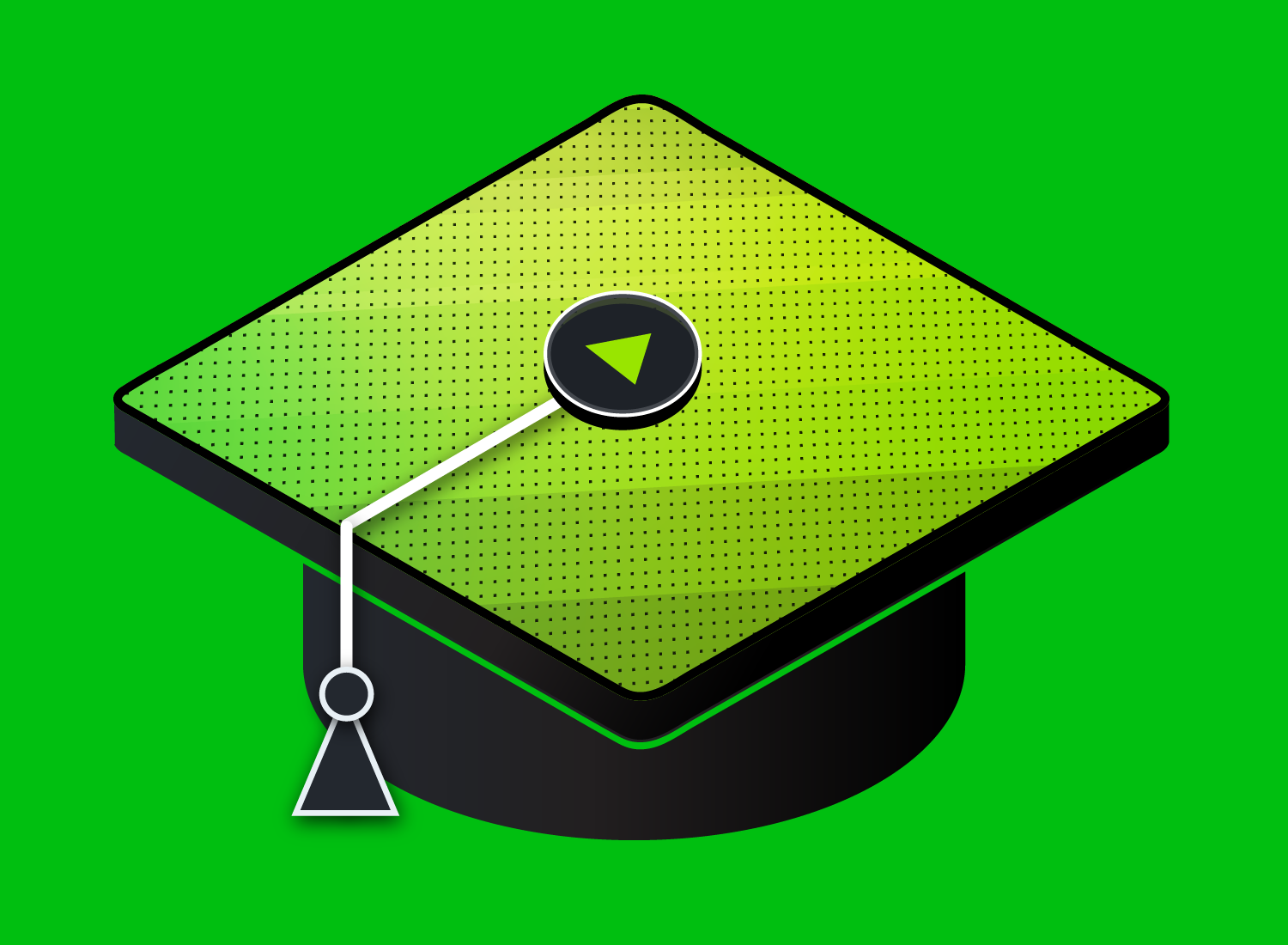Regardless of whether you operate in a B2B, B2C, or B2XYZ environment, your customers have more choices — and higher expectations— than ever before. This is particularly true in the world of digital technology, a rapidly evolving sector that has fewer barriers holding back new players in an already saturated market.
Now, we’re all for competition. It’s a good conduit for innovation and provides customers with an abundance of choices when searching for a product to meet specific needs. But when your customers are always on the lookout for the best technology with the most features at the best price, how do you stand out?
It’s more important than ever to prioritize the customer experience. One wrong move and your customers may quickly turn to your competitors. That’s why the customer experience needs to be at the heart of everything you do.
We believe that customer experience is one of the last true competitive moats for digital technology companies and one of the most reliable ways to develop a defensible brand.
This is where customer educational content — the cornerstone of a superior customer experience — comes in. By providing easily accessible and effective ways for your customers to learn your product, you’ll not only help them make the most of your products and services, but also improve customer retention.
In this Beginner’s Guide to Customer Education, we’ll explore the importance of customer education and how it can help you enhance the customer experience, build brand loyalty, and drive business growth.
Create amazing customer educational content!
Try Camtasia for free today and find out how you can deliver a more rich, engaging, and effective customer education experience.
Download now!What is customer education?
Customer education (sometimes called customer onboarding or customer training) is the process of providing customers with the knowledge and skills needed to use your products or services effectively and efficiently. In other words, if you want your customers to enjoy your product, you need to ensure they know how to use it.
When most people think of customer education they often think of resources such as user manuals and FAQ pages on websites. But some of the most effective types of customer education includesvideos, webinars, and even online courses.
Effective resources provide value to customers by teaching them how to get the most out of your product or service — essentially helping them to succeed. This success leads to increased customer satisfaction, which in turn bolsters their loyalty and ultimately drives business growth.
One of the key benefits of customer education is that it helps companies onboard, train, and retain new and existing customers. When your customers are more successful with your products, they’re more likely to keep using them,reducing churn rates, improving customer retention, and increasing lifetime value (LTV).
Overall, investing in customer education is a smart strategy (probably the smartest!) for businesses looking to improve the customer experience, build customer loyalty, and drive business growth.
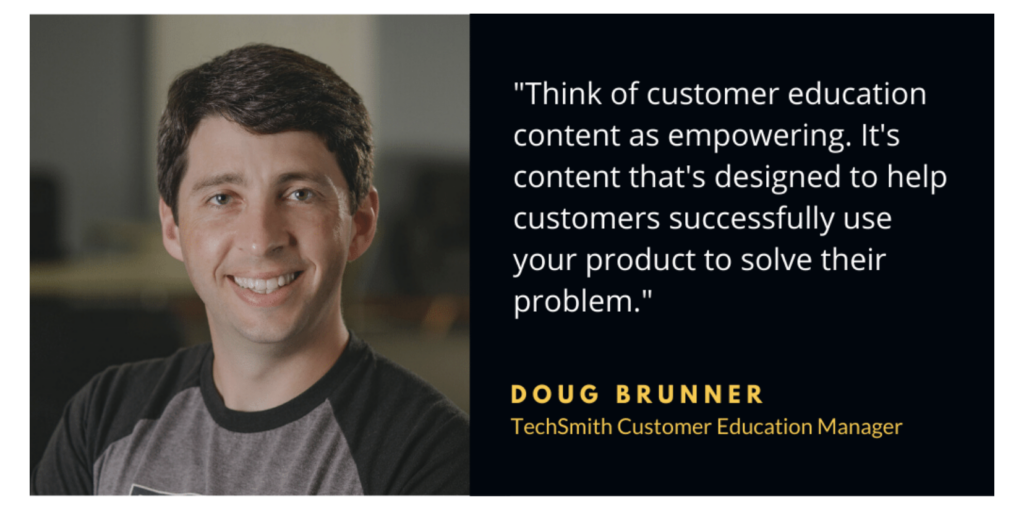
What type of content is educational?
Educational content is any type of content that is specifically designed to help people learn something or acquire new skills or knowledge — it’s pretty self-explanatory, right?
The best and most effective educational content is informational, inspiring, and entertaining. Ensuring the content is well-crafted (and not dull!) will help keep customers focused throughout the learning process.
As promised, here’s a list of some of the different types of educational content you might consider creating for your customers:
- Video: You can build a stronger connection with your audience by hosting webinars and creating educational videos that guide them through processes, step-by-step.
- Tutorials: If you learn how to make video tutorials, you can share your expertise via recorded screen captures that provide clear instructions for completing complex tasks.
- Email: Turn inboxes into a source of inspiration with educational blog posts, ebooks, and podcasts that capture your audience’s attention and help them learn something new.
- Case Studies: Share case studies, and customer story videos, that show people who have successfully solved problems thanks to your product.
- Learning Center: An online academy offers a learning experience featuring all of the materials mentioned above. Having an entire customer education platform, such as an academy, can be essential to delivering a seamless and effective educational experience.
Once you understand the different types of resources and customer education solutions, it’s worth considering how much education your customers need to successfully use your product…
Who should use customer education?
Not all products and services are complicated enough to warrant investing in a customer education program. For instance, you don’t need a user manual to know how to use a light switch! However, if you do have a complex product or service that’s often being updated, customer education initiatives can be great for keeping your users in the know.
On the other hand, if you have a particularly large customer base, a formalized customer education program can provide consistent and scalable training to ensure all customers get the training and support they need.
You should also keep in mind that customer education isn’t just for your existing customers. Instead, it’s a process that follows the entire customer lifecycle, starting at the prospecting stage.
While it’s important to remember that customer education is quite different from marketing, educating potential customers on industry best practices, innovation, and how your product fits into the market, can be a fantastic way to engage them.
Once a prospect becomes a customer, the focus shifts to onboarding, which is when the purpose of educational content is to help them become “power users” of your product. Forward-thinking companies even use education initiatives to predict and prevent customer turnover.
But even then, the most successful customer education initiatives don’t stop with people buying from you. To truly educate your entire customer ecosystem, you need to consider educating your partners and customer-facing employees. This help will achieve broader business goals like improvements in customer retention, product utilization, and revenue.
The ultimate guide to easily make instructional videos
In this FREE guide, we share our secrets to creating high-quality training and tutorial videos.
Download now!
Benefits of customer education
Educational content for your customers may be all the rage, but can your bottom line really benefit from all the time and effort that goes into creating it? We know full well that getting the support of management relies on being able to prove the business value to decision-makers…
While you might be trying to get approval for your business to start producing educational content, there’s probably someone out there trying to convince their leadership to invest in your product.
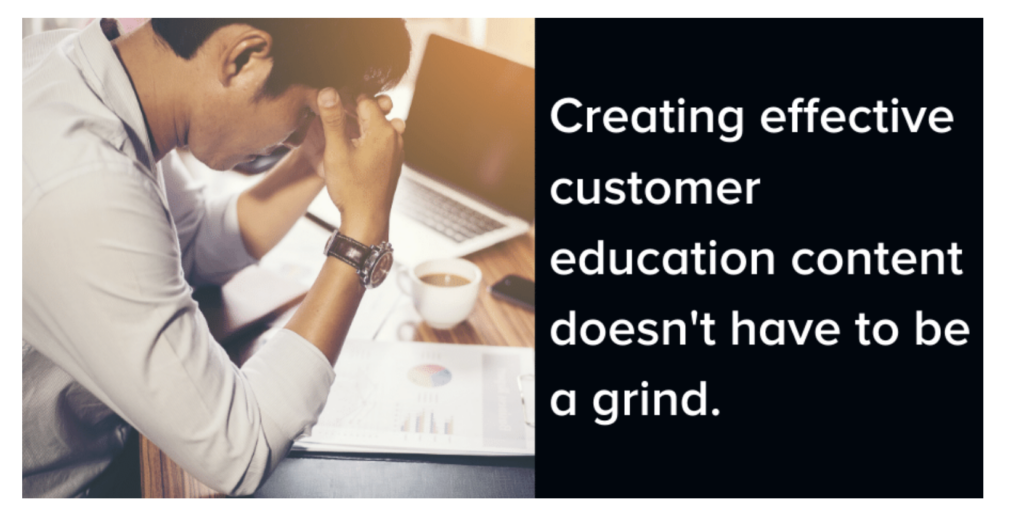
Creating educational content may be an ongoing process that requires a good deal of time and resources, but it’s great for providing value to your current customers, and proving value to your prospects.
But that’s not all as there are plenty of people that could benefit from your educational content beyond those you’re trying to sell to. With that in mind, let’s take a closer look at some of the ways businesses can benefit from creating educational content.
Create amazing customer educational content!
Try Camtasia for free today and find out how you can deliver a more rich, engaging, and effective customer education experience.
Download now!Higher customer success
Knowledge is at the very core of customer satisfaction. Imagine if people didn’t know how to use a light switch and they were left sitting in the dark thinking: “What a waste of money!” Well, this applies to almost every business — especially those with complex products.
If your customers don’t know how to use your product, and have no way of learning, then they probably won’t be customers for very long. By providing customers with the information and skills they need to get the most out of your product, educational content can be a powerful tool for boosting customer success.
Video tutorials, online courses, step-by-step instructions, and other forms of educational content can help users learn how to use your product more effectively and efficiently. This can help reduce frustration and increase satisfaction, leading to long-term customer retention.
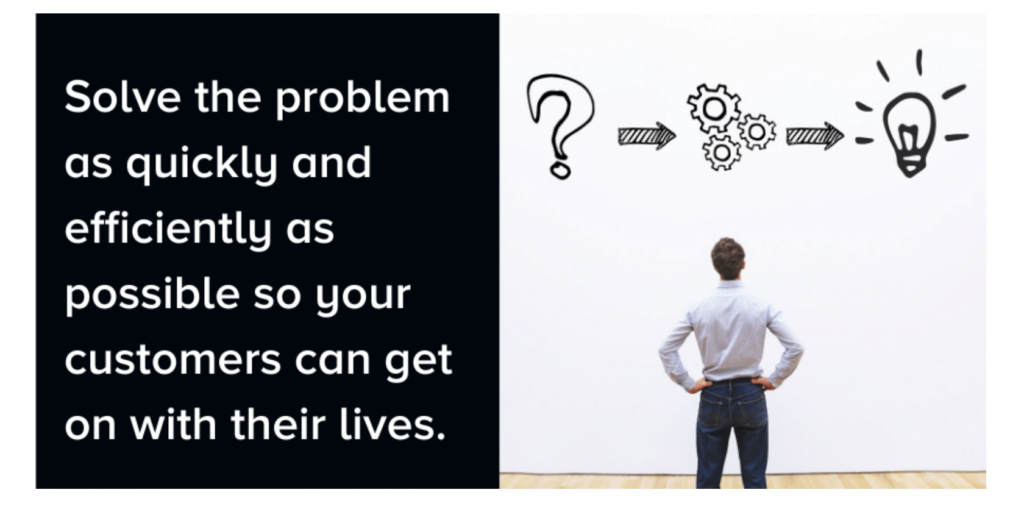
Higher product adoption and engagement
Generally speaking, people have a tendency to stick to what they know, and adapting to a new product or service isn’t something everyone is willing to devote time and effort to. This is particularly true if someone is left to figure out how to use something themselves, without any educational resources.
However, it’s important to avoid overwhelming your customers with lots of detailed instructions, especially with any material that’s intended to be an introduction to your product.
The key to increasing adoption and engagement is to start with a high-level overview of your product and what it can do. By demonstrating the value your product offers, your customers will understand how it can benefit them, which will motivate them to learn about it and how to make the most of it.
Once you’ve captured their attention, you can dive deeper into the features and functionalities of your product or service. This might include offering step-by-step guidance and providing examples of how other customers have used your product to solve problems. This approach helps customers feel more confident in their ability to use your product, leading to increased adoption and engagement.
Create amazing customer educational content!
Try Camtasia for free today and find out how you can deliver a more rich, engaging, and effective customer education experience.
Download now!Better sales-marketing relationships
While everyone is working toward the same end goal, it often seems as though there’s a kind of sibling rivalry between sales and marketing departments. Friction between teams often boils down to miscommunication and having different ideas about who the customer is, what they need, and how they should be engaged.
Customer educational content can help encourage better sales-marketing relationships by creating a shared understanding of the customer. When marketing and sales teams collaborate on creating educational content, they’re forced to align on the customer’s needs, pain points, and desired outcomes.
This alignment leads to a more comprehensive understanding of the customer’s journey and allows both teams to create targeted and effective content. By working together on creating educational content, the marketing and sales teams can bridge any communication gaps and build a more collaborative relationship.
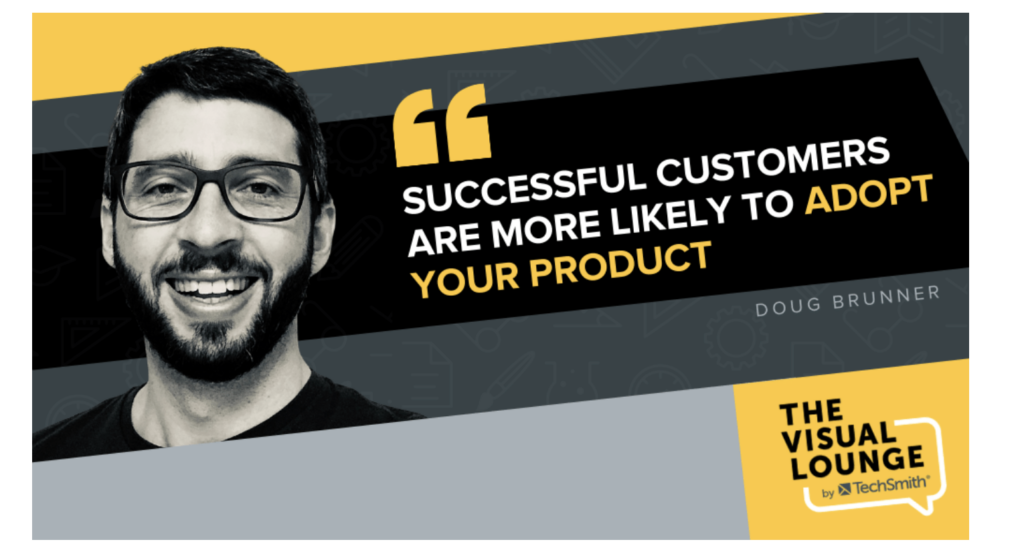
Everyone gets the same information
By creating a comprehensive program, companies can provide a consistent onboarding experience to each customer. It ensures that every customer has access to the same information, regardless of who they speak to or when they’re brought on board
This consistency is vital to ensure a positive customer experience. Customers want to feel like they are getting a personalized service, but they also want to know that everyone is being treated equally. With a customer education program, companies can strike the right balance between personalization and consistency, providing each customer with the same foundational knowledge.
Customer support becomes more cost-effective
While it’s true that effective educational content requires a considerable investment in resources, it’s also true that it can save your business a lot of time and money once it’s made available to customers.
Once it’s live, educational content enables customers to find the information they need without needing support. On the one hand, this means your support team will have more time to focus on dealing with separate issues. On the other, it might mean you don’t need as big a support team.
Another benefit of customer educational content is that it can help to improve customer satisfaction. When customers are able to find the information they need quickly and easily, they are more likely to be satisfied with your product or service. This can lead to fewer complaints, fewer negative reviews, and an overall better reputation for your business.
Create amazing customer educational content!
Try Camtasia for free today and find out how you can deliver a more rich, engaging, and effective customer education experience.
Download now!What to include in a customer education program?
When developing a customer education program, it’s important to consider your customers’ needs, identify knowledge gaps, and create relevant content to address every question they could possibly have — yeah, it’s a big job!
You also need to determine the best way to deliver and present the information to your customers. For example, you might choose to use instructional videos, webinars, online courses, or a combination of all three.
There’s no one-size fits all approach, but there are some components that all customer education programs should include, such as:
Self-service help
Providing customers with the resources they need to solve their own problems saves time and resources for both the customer and the company. But more importantly, it enhances their experience of learning how to use your product.
A knowledge base, an FAQs webpage, video tutorials, and archived webinars all fall under the umbrella of self-service content. And because these can all be made available 24/7, customers based in different timezones all stand to benefit. This can prove to be an efficient and satisfying way to provide customers with quick resolutions to their problems.
Including self-service help also encourages customer engagement with the product or service. By providing customers with the resources they need to succeed, they’ll be more likely to continue using the product, which will lead to increased retention rates and positive referrals.
Create amazing customer educational content!
Try Camtasia for free today and find out how you can deliver a more rich, engaging, and effective customer education experience.
Download now!Knowledge base
Having a one-stop shop full of information about how to use your product or service is a great way to provide your customers with all the information they need.
Depending on your product, budget, and customer base, a knowledge base could be something as simple as a comprehensive FAQ page on your website. Or, it could be an extensive resource library, filled with videos, guides, and user manuals. Either way, a knowledge bank provides your users with a self-serve option for product-related questions, allowing them to find the information they need quickly and easily.
When creating a knowledge base, it’s incredibly important to approach it from the customer’s point of view. This means organizing the information in a way that’s easy to navigate, and replacing jargon with language they’ll be familiar with.
While the primary purpose of a knowledge base is to serve your customers, it can also be very useful in identifying the product functions that your users might be struggling with. By tracking how customers use your knowledge base, you’ll be able to find out if there’s anything about your product that they’re struggling to use.
With this data, you can work on improving your educational content and address areas where users may need additional support.
Webinars
Live webinars are becoming increasingly popular as a tool for customer education. They can create an emotional connection with customers and are particularly effective when information and processes are frequently updated.
What’s great about webinars is that they’re relatively cheap and easy to run — making them ideal for new customer education teams. They are also great for getting instant feedback and gauging where users might need more support and insight.
However, for all the benefits of hosting a live webinar, it can be easy to get trapped in an endless cycle of scheduling them — especially if your audience is stretched across multiple timezones.
While you can always record your webinars and share them online after the event, it isn’t quite as personal. But, it’s still a great way to repurpose content and share information.
Create amazing customer educational content!
Try Camtasia for free today and find out how you can deliver a more rich, engaging, and effective customer education experience.
Download now!How to create a customer education strategy?
By educating customers at every stage through their journey, you’ll be empowering them to achieve success with the product, resulting in increased customer loyalty, retention, and advocacy. In other words, education can have a significant and measurable impact on the business, throughout the entire customer lifecycle.
In the early stages of the customer lifecycle, educational content can help potential customers understand the benefits of the product, leading to higher conversion rates. Once customers have purchased the product, onboarding education can help them get started quickly and ensure a smooth transition to regular usage.
As customers become more experienced with the product, continued education can help them unlock new features and use cases, leading to increased usage and a higher LTV. Furthermore, ongoing education can keep customers engaged and up-to-date with new features and updates.
Now that you know just how much value a customer education program can bring to a business, and you know what you need to include, you’re probably eager to create one for your business. But where do you start?
In this section, we’ll take a look at some of the key steps to create your own customer educational content.
Define your goals
Launching a customer education program is an exciting opportunity to boost the impact of a business. However, to ensure its success, it’s really important to align your program with the company’s strategic goals.
The best place to start is probably by having a discussion with company leaders and decision-makers about metrics and key performance indicators (KPIs), such as customer acquisition and LTV. If you can get the big dogs interested in the program, it’ll be much easier to dedicate time and resources to making it a success.
It’s also important to consider the strategic impact the program can have on the business as a whole. The key is to align it with company-level goals and set realistic targets every step of the way.
Create amazing customer educational content!
Try Camtasia for free today and find out how you can deliver a more rich, engaging, and effective customer education experience.
Download now!You should also remember that the definition of success can vary across departments, which is why it’s important to consider how customer education can positively impact sales, marketing, and customer service. Each department will have different ways to measure success, so it’s vital to understand how customer education can help them reach their respective goals.
Allocate your budget
Setting a budget is an important step to ensure that you can deliver an effective customer education program (and a high-quality experience) with the resources you have at your disposal. First, you have to identify what you’ll need to make the program a success, which could include people, technology, content creation, and marketing.
Once you have a clear idea of what you need, consider the resources you already have. Are there any tools or personnel that could be borrowed from other departments?
For instance, is there someone in the company who already knows how to create and edit videos? Is there an intern who could support you for a few hours to help with some of the more basic tasks? By borrowing resources from other teams, you can reduce the amount of funding needed to launch your program.
You should also remember that communication is key to securing funding. Make sure that executives and other stakeholders understand the benefits of investing in customer education and the potential return on investment.
To do this, you could host events and create marketing materials to generate a buzz around your program. By increasing visibility and momentum, you can get people across the business invested in your program, which might help you secure a few extra resources.
Create amazing customer educational content!
Try Camtasia for free today and find out how you can deliver a more rich, engaging, and effective customer education experience.
Download now!Create the content
To create a successful customer education program, it’s important to identify the customer learning objectives that will drive the business outcomes that you and your stakeholders want to see.
On the user experience side of things, using a combination of visual communication and interactive learning — such as videos, slideshows, infographics, and quizzes — is the best way to create a dynamic learning experience that people actually enjoy completing.
In fact, 83% of people prefer watching videos to accessing instructional or informational content via text or audio — so be sure to make video content a key part of your customer education program.
Measure the results
If you thought that creating a customer education program stopped once you’ve created the content, well, we’ve got some news for you… it’s really just the beginning!
Once your program is live, you’ll need to start measuring its performance — both in terms of quality and quantity. This isn’t just so that you can prove to the company that it’s working, it’s so you can adjust and optimize the program.
This means that as well as keeping the door open for feedback, you need to put out a welcome mat and listen to everything that everyone has to say. You might consider sending out surveys, directly asking for feedback, and even conducting short interviews with the people that have used your content.
This is the only way you’ll be able to optimize your educational content, and improving it over time is the ultimate key to a successful program. If you think it sounds like a lot of hard work and consistent effort, you’d be right — but it’s well worth the investment.
Customer education best practices
So, we now know that a great customer education program is an essential part of your business strategy, but how can you ensure that your program remains successful and sustainable over the long term?
In this section, we’ll take a closer look at some of the best practices of creating customer education content, to help provide your clientele with the knowledge and skills they need to succeed.
Create bite-sized content
It’s always worth keeping your customer educational content as short and sweet as possible. Rather than trying to cram lots of information into one piece of content, “micro-learning” can be a much more effective (and enjoyable) way for people to learn.
Micro-learning is an approach to teaching that concentrates on delivering short lessons that are focused on very specific objectives. By breaking down long lessons into small and digestible chunks, micro-learning makes it easier for on-the-go learners to fit training into their busy schedules.
However, the effectiveness of micro-learning depends on how well it’s executed. To ensure learners stay engaged, it’s crucial to increase the frequency of interactions and reinforce the content with quizzes or questions. Encouraging learners to complete the lessons in this way can also help build momentum and keep them interested.
Create amazing customer educational content!
Try Camtasia for free today and find out how you can deliver a more rich, engaging, and effective customer education experience.
Download now!Use a lot of visuals
We’ve said it before, we’ll say it again and we’ll keep on saying it: visual communication matters! When learners see information presented visually, they can process it, understand it, and most importantly, retain it.
We all know that reading long paragraphs of text can be overwhelming, tedious, and even boring, so it should come as no surprise that too many words will lead to most learners losing interest in the content.
However, by incorporating visuals in your user documentation, such as videos, images, diagrams, infographics, and even GIFs, you can break down complex concepts and keep your audience engaged.
By ensuring your content is as engaging as can be, you’ll be able to keep learners interested and motivated to keep learning, which will improve the effectiveness of your education program.
Make training feel personal
As well as regularly using visuals throughout your educational content, the best way to engage your audience is to make it feel personal.
Even the smallest of personal touches, such as using names on the welcome screen, can go a long way in creating an effective learning experience for your customers. Of course, the more tailored this content is, the better!
Make content mobile-friendly
It’s impossible to predict where and when people will find time to digest your content or the device they’ll be using. As the world becomes increasingly mobile, it’s super important to ensure that your education program is accessible across a range of devices.
This means optimizing your content for mobile devices and ensuring it can be easily consumed on the go and in public spaces. The micro-learning approach we mentioned earlier is perfect for this as people much prefer consuming short-form content — such as 2–5 minute modules and videos — on their phones.
For text-based material, be sure to keep the language simple and the format easy to digest — that means short paragraphs and lots of bullet points!


